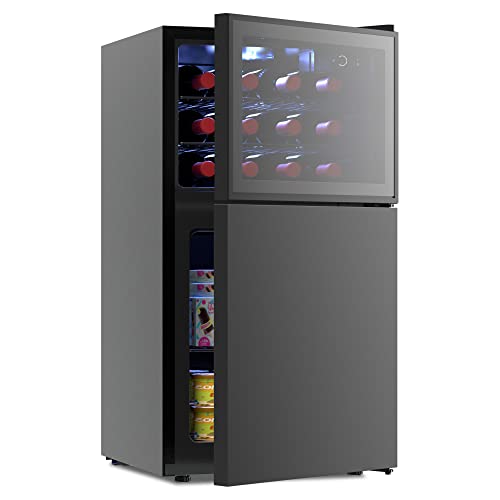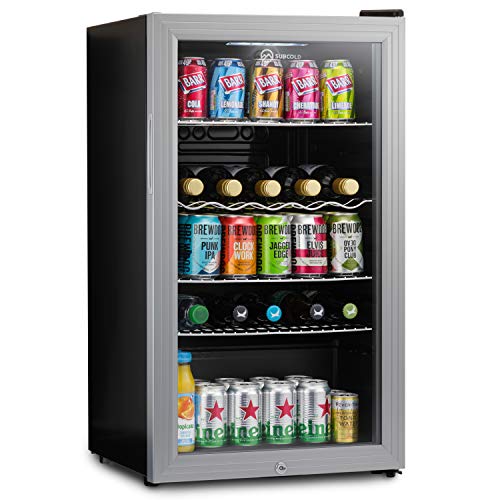Energy Efficient
top wine refrigerators Storage With a Wine Refrigerator Built in

Keep your wine at the ideal temperatures to serve or for long-term storage by using this energy efficient built in wine refrigerator. Dual temperature control zones let you store red and white wines separately, preserving their full flavor.
Perfectly crafted to blend into your cabinets, these units can be installed
under the cabinet wine fridge countertops for easy access to a refreshing glass of Riesling after dinner. However, they require proper ventilation and clearance to allow heat to be dissipated effectively.
Size and Capacity
A Wine Refrigerator built In (
maxes.co.kr) is a stylish and sleek alternative to large freestanding units. Built with front vents they can be recessed into counters or cabinets to create a seamless look. These wine coolers are also more versatile, allowing for the storage of cold drinks and wine.
These wine refrigerators can store up to 368 bottles and are ideal for serious collectors with many bottles. These units are designed to protect your wine for a long time by ensuring that they have ample storage space and precise temperature control. These units are perfect for garages, basements or spaces that are not air-conditioned, and where a rugged and robust storage environment is required.
The cooling capacity of a wine fridge is typically measured in terms of how many standard Bordeaux-style bottles it can hold. It is also important to consider whether your collection of wine includes other sizes of bottles, like Champagne or Burgundy. This will affect the capacity requirements since these bottles require more space than a standard Bordeaux bottle. Some wine refrigerators include adjustable shelves that provide flexibility to store different sizes of bottles.
You'll also need to think about the best location for it. If you intend to install it inside existing cabinetry, you will require 6 inches clearance from the rear, and on both the right and left side. This is so that the heat given off by the wine refrigerator can escape easily and prevent it from overheating.
You should think about installing one of these premium wine fridges to the kitchen if you're planning to spend a fortune on an expensive model with an impressive stainless finish. With their sleek and sophisticated doors they are the ultimate in luxury and will create a striking statement piece to your home. They are also available in larger capacities and are ideal for those who enjoy entertaining and large gatherings. These wine refrigerators come with various features, including dual-zone cooling and UV protection, as well as numerous other options.
Ventilation
If a wine refrigerator is not properly ventilated hot air can collect and cause the appliance to overheat. Ventilation is essential because it helps the cooler maintain an optimal humidity and temperature while also ensuring against fluctuations in temperature that could damage the bottles or alter the flavor of the wine. Check your wine fridge after it has run for a short time to ensure it has the right ventilation system. If the fridge is cool to the feel, then it has proper ventilation.
Most wine fridges come with an internal temperature sensor that checks the temperature inside the cooler and informs you if it is out of range. Some models have dual temperature-controlled zones to allow you to store different types of wines at ideal serving temperatures.
The ideal temperature for storing wine is between 55 and 66 degrees Fahrenheit. This will prevent cork rot and other issues which could damage your collection. Some models come with a lamp that will light up when the temperature inside is below the desired level.
A built-in wine refrigerator may be the ideal option for your collection, depending on your storage requirements. They can be placed seamlessly beneath countertops in the kitchen or in bar areas to provide guests with an easy access. Some models have front ventilation, so they can be flush mounted together with cabinetry to create a an elegant appearance.
When installing a wine refrigerator, you need to measure the space and take into account cabinet width. The fridge must be at least a few inches away from the wall on all sides to permit proper ventilation. A wine refrigerator that is pushed against a wall or cabinet could block the vents, which prevent heat from venting. Freestanding wine fridges have vents on the sides or rear to effectively disperse heat.
Installation
A wine refrigerator that is built-in can make a chic, functional addition to your home bar. When you are deciding on the best location for your new appliance you must keep certain things in mind.
First of all, make sure that your new cooler has adequate space to ventilate. If a wine refrigerator is not adequately ventilated, it will overheat and ultimately reduce its lifespan.
Also, keep your wine fridge out of direct sunlight and other sources of heat. This will shield your collection against the harmful ultraviolet rays from the sun and let it effectively cool down.
The last thing to do is ensure that your wine fridge is not too near another appliance that produces heat, such as dishwashers. This could cause your wine to be damaged or experience unpredictable temperature fluctuation.
Wine refrigerators are available in two forms of built-in and
freestanding wine chiller. Freestanding wine refrigerators provide more flexibility in terms of installation, while built-in units integrate seamlessly into kitchen cabinets. Both models are available in a variety of bottle capacities and styles so you can pick one that fits your home.
In order to ensure your new wine fridge is able to effectively ventilate, take measurements of the space in which you intend to put it. If you can you can leave a few inches of clearance around the unit for ventilation reasons. Also, make sure that the door is fully open. If it isn't be opened, the racks within will be difficult to reach.
Some models also have specific temperature preferences. Some wine refrigerators keep red wines at 55°F for optimal serving, while others are designed for long-term storage. Based on your requirements, you may want to consider buying a dual-zone refrigerator that allows you to store long-term wines at the appropriate serving temperature, and serve chilled beverages in the other zone.
If you're planning to put in a wine refrigerator built in it, make sure you've follow the manufacturer's guidelines carefully to ensure that the new cooler is installed correctly. Wait a few hours after moving it into the room before turning it on to let the coolant settle.
Energy Efficiency
In the current era of high-cost energy, it's important to be aware of the energy consumption of every appliance. When buying a built in wine fridge look for models that have an energy efficiency rating or Energy Star certification. This means that the wine refrigerator is built with the latest cooling technology and insulation to conserve energy.
A wine fridge needs to cool the entire interior of the refrigerator and the bottles that are stored inside. A larger
compact wine fridge fridge with a larger capacity bottle will consume more energy than smaller models. Also, the temperature of the room can impact the fridge's power consumption as it works harder to maintain the temperature of the interior.
To reduce the amount of energy consumed by your wine fridge, ensure that it is always fully stocked. This may seem counterintuitive, but an wine fridge that is filled with cold, sealed bottles won't need to struggle as much to maintain its internal temperature. Also, having the shelves and bottles set correctly can also help your wine fridge operate more efficiently. If you place your bottles horizontally they'll chill quicker than if you put them on their sides.
Another way to help reduce the energy consumption of your wine fridge is to choose a new model that features advanced cooling technology. The most recent models are more energy efficient than previous models and could help you save as much as PS100 per year on energy costs.
When looking for a brand new wine refrigerator, opt for one with an energy-efficient compressor cooling system. This type of fridge consumes less energy and is also more environmentally green than a wine fridge with a compressor that is more energy efficient. Think about a thermoelectric refrigerator. These wine coolers cool the interior with a Peltier-effect, which uses much less energy than compressor-based units. They are more sensitive to temperatures and require more regular maintenance. Choose a brand that has an established track record of making reliable high-quality wine refrigerators. They are likely to make a refrigerator with an energy-efficient cooling system and quiet operation.




